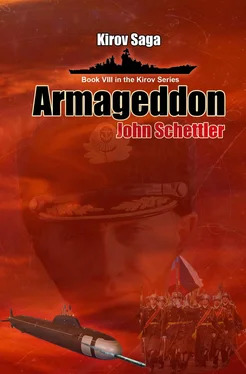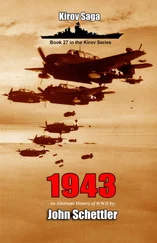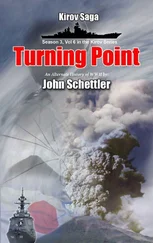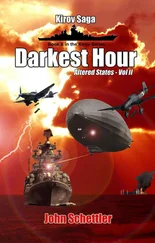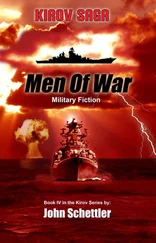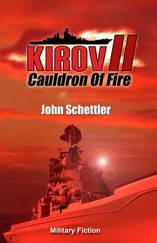John Schettler - Armageddon
Здесь есть возможность читать онлайн «John Schettler - Armageddon» весь текст электронной книги совершенно бесплатно (целиком полную версию без сокращений). В некоторых случаях можно слушать аудио, скачать через торрент в формате fb2 и присутствует краткое содержание. Жанр: Альтернативная история, на английском языке. Описание произведения, (предисловие) а так же отзывы посетителей доступны на портале библиотеки ЛибКат.
- Название:Armageddon
- Автор:
- Жанр:
- Год:неизвестен
- ISBN:нет данных
- Рейтинг книги:3 / 5. Голосов: 1
-
Избранное:Добавить в избранное
- Отзывы:
-
Ваша оценка:
- 60
- 1
- 2
- 3
- 4
- 5
Armageddon: краткое содержание, описание и аннотация
Предлагаем к чтению аннотацию, описание, краткое содержание или предисловие (зависит от того, что написал сам автор книги «Armageddon»). Если вы не нашли необходимую информацию о книге — напишите в комментариях, мы постараемся отыскать её.
Armageddon — читать онлайн бесплатно полную книгу (весь текст) целиком
Ниже представлен текст книги, разбитый по страницам. Система сохранения места последней прочитанной страницы, позволяет с удобством читать онлайн бесплатно книгу «Armageddon», без необходимости каждый раз заново искать на чём Вы остановились. Поставьте закладку, и сможете в любой момент перейти на страницу, на которой закончили чтение.
Интервал:
Закладка:
“Are you kidding me?” Stone smiled. “That’s the Admiral Kuznetsov there, Mister Reed. It’s the last surface ship in the Red Banner Pacific Fleet that could pose any threat if it broke out into the Pacific or the Sea of Japan. You can bet your bottom dollar that they have a sub nearby-probably two or three. If I was the Russian Fleet commander I’d have my very best boat right there, on undersea watch for that ship.”
Reed raised an eyebrow, then nodded his agreement as Stone handed him back the file. Yes, he thought, that makes good sense…Their very best boat…He looked at the satellite image again, a suspicious light in his eyes.
Part II
“No great discovery was ever made without a bold guess.”
Isaac NewtonChapter 4
“I must tell you, Mister Kamenski, even with over forty years in the Russian Navy I have never been all that comfortable sailing in a ship that has to sink first before it can do anything.”
“Yes, this is just a little claustrophobic,” said Kamenski, “and the thought of having a lot of water over my head soon is just a bit disconcerting, Admiral.”
They were aboard the AS-28 submersible, an old boat that was first commissioned in 1986. At 55 tons displacement, it was no more than 45 feet long and just twelve and a half feet wide, with room for twenty passengers. Their party filled half the available seats, the Admiral, Kamenski, Fedorov, Orlov, Troyak, Zykov, Dobrynin and three engineers. Their cargo had been quietly transferred a few hours ago, and now they were making way on the surface, but still towed by the much faster Sayany salvage ship. The submersible could do little more than three knots on its own.
“This segment of the mission is all part of the show,” said Volsky. “If the Americans do see anything from space, they will know we are at least two kilometers from the Admiral Kuznetsov, but now that we are here we will submerge and creep back beneath the carrier to rendezvous with Kazan.”
“Won’t they see us on infrared?”
“Not at the depth we’ll be descending to. Kuznetsov is sitting atop a deep segment of the strait, close by an area we have used for old explosives dumping. Kazan is hiding down there, over 450 meters deep. The only other thing that will notice us there would be the fish, or another submarine.”
“Seems secure enough.”
“Not to my liking.” The Admiral folded his arms. “This vessel had to be rescued itself when it ran afoul of a hydrophone antennae off Kamchatka some years ago. It’s not very comforting when you have to rescue the rescue ship!”
Fedorov was seated with them, and he leaned in now, a determined look on his face. “Once we get to Kazan things will be more comfortable,” he said. “I spent some time on that boat last year. It’s one of our very best, highly automated, and with a crew of only ninety, though it can easily accommodate our party here.”
It was not long before they had reached their designated diving zone, and the AS-28 was cut loose and began to descend. Volsky and Kamenski watched the water rise above the portholes with some misgivings, but settled in for the thirty minute journey back to Kazan.
“It’s quiet down here,” said Fedorov.
“Too quiet,” Volsky tossed out the old cliche knowing that his young ex-navigator wouldn’t feel the rising sense of caution that was already turning in his own gut. The man had the bravery to shift back to 1942 from the Primorskiy Engineering Center, not knowing where he might turn up. That took real courage, he thought.
“Mission profile calls for a full scan of the boat’s exterior before we latch on,” Fedorov noted the information for Kamenski’s benefit. They soon heard the submersible pilot, a man named Jakov, speaking quietly with his co-pilot as they made their approach to Kazan.
“I’m rolling ten degrees,” he said. “We’ll look the aft hatch section over first.”
“Confirmed.” The co-pilot pulled down a view scope and adjusted the rangefinder for close imaging. The green light on the unit drew a thin line over the smooth, bald surface of his head. As he peered through the scope and examined the long sleek lines of the hidden submarine. He adjusted the focus and switched on the record function to log the data.
“Looks clean,” he said. “No sign of damage to the propulsion systems or rudder. Hull integrity appears nominal. Some temperature variance on infrared.” He was working quickly, and Fedorov, very curious as he watched, could almost see the mental check marks ticking off in his head as he completed one task after another.
They waited until the submersible finished a full exterior scan, but there wasn’t much to see. Kazan looked to be in good shape, with nothing more than normal discoloration on its missile hatches from the combat salvos the boat had fired in the battle against the Americans. It was a long cylinder with a sleek sail forward that looked like a truncated shark fin. They hovered a few meters off the aft quarter of the ship.
“Light them up,” said the pilot, and his partner activated the exterior spotlights. Fingers of light reached out and probed at the cylindrical hull of the other boat, playing over the darkened oval of the access hatch, but revealing nothing unusual.
“I’m taking us over to the emergency hatch on section four,” said Jakov, hands on his maneuvering yoke.
“Confirmed for section four.”
The submersible danced in response to his commands on the control yoke. In a few moments they were poised over the circular rim marking the location of the emergency access shaft. It was nothing more than a thin lip of metal on the otherwise smooth surface of the submarine. Jakov rolled the submersible on its side, for the only way to dock would be through a six foot access cylinder that deployed from that location. The co-pilot was already checking the docking cylinder controls as he thrust the view scope back into its overhead compartment.
“Ready to dock.” Jakov had the ship in a perfect position for the rendezvous.
“Mooring cables clamping on.” The co-pilot toggled the switch to enable the computer controlled cables to reach out and fasten themselves to the submarine, a new feature on the boat when it was upgraded in 2018. A small cylinder emerged from the borders of the submersible and extended out to contact the submarine’s hatch. “Cylinder operative… Deployed. Permission to pressurize cylinder?”
The kiss would make the marriage, Fedorov thought. After that the two ships would be securely linked.
“Pressurize,” said Jakov, and the cylinder hummed to life and rotated a thin rim along the outer lip of the interface until it located a small aperture. The mouth of the cylinder was soon locked in place and the containment within was going to a normal one atmosphere pressure, pumping out the seawater as it did so.
“Engaging processors.”
In a few moments a pressurized atmosphere would fill the interior of the cylinder.
“Shall I let them know we are ready, Admiral?”
“Please do,” said Volsky, and the word soon came back from Kazan.
“Captain Gromyko sends his regards, Admiral.”
“May I sir?” Fedorov was eager to be the first one through the cylinder, and Volsky nodded, smiling at the young man’s energy.
“He would swim over if he had to,” he said quietly to Kamenski.
Fedorov rotated the handle of the interior hatch and a dry hiss greeted him as the air from the docking cylinder mixed with the submersible cabin. The distinctive tang of seawater was in the air. He wasted no time and crawled down into the tube, his service jacket dappled with the drippings of residual seawater. In a few seconds he was poised on the last ladder rung above the submarine deck hatch.
Читать дальшеИнтервал:
Закладка:
Похожие книги на «Armageddon»
Представляем Вашему вниманию похожие книги на «Armageddon» списком для выбора. Мы отобрали схожую по названию и смыслу литературу в надежде предоставить читателям больше вариантов отыскать новые, интересные, ещё непрочитанные произведения.
Обсуждение, отзывы о книге «Armageddon» и просто собственные мнения читателей. Оставьте ваши комментарии, напишите, что Вы думаете о произведении, его смысле или главных героях. Укажите что конкретно понравилось, а что нет, и почему Вы так считаете.
